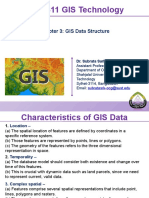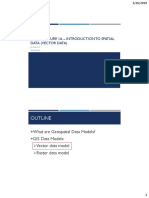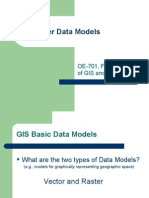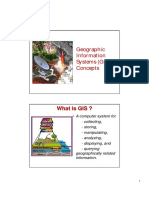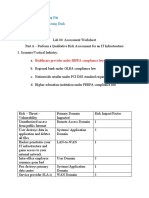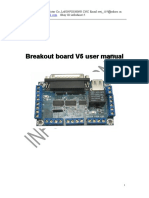0% found this document useful (0 votes)
19 views83 pagesLecture 6 - Spatial Data Models and Sourcesv2
The document outlines the fundamentals of GIS data models and sources, focusing on spatial data models, raster and vector data models, and their respective advantages and disadvantages. It also covers the importance of data representation in GIS, the characteristics of spatial elements, and the sources of geographic data capture. The expected outcomes include understanding GIS data representation, abstraction levels, and identifying common spatial data models.
Uploaded by
Xander MelidoCopyright
© © All Rights Reserved
We take content rights seriously. If you suspect this is your content, claim it here.
Available Formats
Download as PDF, TXT or read online on Scribd
0% found this document useful (0 votes)
19 views83 pagesLecture 6 - Spatial Data Models and Sourcesv2
The document outlines the fundamentals of GIS data models and sources, focusing on spatial data models, raster and vector data models, and their respective advantages and disadvantages. It also covers the importance of data representation in GIS, the characteristics of spatial elements, and the sources of geographic data capture. The expected outcomes include understanding GIS data representation, abstraction levels, and identifying common spatial data models.
Uploaded by
Xander MelidoCopyright
© © All Rights Reserved
We take content rights seriously. If you suspect this is your content, claim it here.
Available Formats
Download as PDF, TXT or read online on Scribd
/ 83











